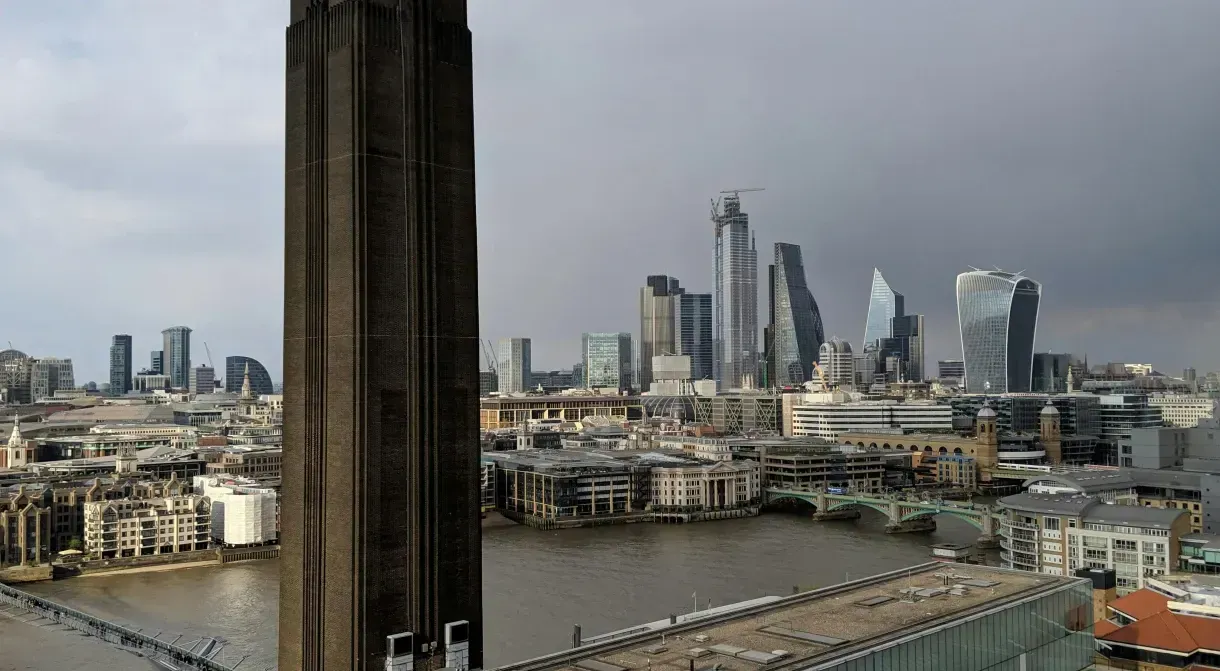The 13 Most Iconic Buildings in London

There isn’t anywhere else in the world quite like London when it comes to architectural diversity. In the heart of the city, glittering skyscrapers with eccentric names – the Shard, the Gherkin, the Walkie Talkie – rub shoulders with Medieval marvels such as the Tower of London. Here’s a definitive list of the buildings not to miss when you’re in town.
The Shard
Building

St Paul's Cathedral
Building, Cathedral, Church

Tower of London
Building, Museum

With nearly a thousand years of history, the Tower of London is the oldest intact building in the capital. The White Tower was the first part to be constructed, at the behest of William the Conqueror, who wanted a formidable Norman fortress as the ultimate power symbol. Throughout the centuries, the building has had many incarnations, serving as a royal household, zoo, prison and now as the protector of the Crown Jewels. In the 13th century, exotic creatures, including a polar bear, a lion and an elephant, gifted from European monarchs, lived in the tower; later, when it was known as a tower of torture, Anne Boleyn, Guy Fawkes and Sir Walter Raleigh awaited their end here. Today, some traditions are still going strong, including the Ceremony of the Keys, an elaborate ritual of locking up the tower at night, which lucky guests can witness if they book at least a year in advance.
British Museum
Building, Museum, Library

The Houses of Parliament
Building

Tate Modern
Art Gallery, Bridge, Building, Museum

The Gherkin
Architectural Landmark

Ridiculed when it was announced but an instant hit when it was built, Norman Foster’s famous bullet-shaped building became one of the first truly great contemporary skyscrapers to sculpt London’s skyline. Standing proud at 180m (590ft), the glittering glass Gherkin is three times the height of Niagara Falls but actually a scaled-down version of what Foster originally envisioned. The site itself has an interesting backstory: it’s officially named 30 St Mary Axe after the vanished church that apparently contained an axe used by Attila the Hun and, during construction of the skyscraper in 1995, the body of a Roman girl was discovered there (she was given a funeral at St Botolph’s Church and reburied near the Gherkin).
National Theatre, London
Theatre, Theater, Art Gallery

City Hall
Building

Buckingham Palace
Building

The Walkie Talkie Tower
Architectural Landmark

This distinctive skyscraper on 20 Fenchurch Street, aptly dubbed the ‘walkie talkie tower’, is just one of the standout buildings among London’s skyline. Designed by Uruguayan architect Rafael Viñoly, the 34-storey building is top-heavy and has a public viewing gallery, the Sky Garden, at the top (you can book free tickets online). Other peculiar skyscrapers in the capital include Foster + Partners’ St Mary Axe, nicknamed the Gherkin, and the wedge-shaped Leadenhall Building, also known as the Cheesegrater. Recommended by Ella Braidwood.
London Aquatics Centre
Swimming Pool

Designed as the showpiece for the 2012 Olympics, this majestic building bears the trademark sweeping curves of the late Zaha Hadid, inspired by the fluidity of moving water. The sculptural, stingray-like roof dives and swoops over the main swimming pool, reflecting Hadid’s talent for creating dynamic architecture with drama. For just over £5 ($6), you can swim in the spectacular 50m (164ft) Olympic pool; if you have any energy left, head outside and slide down the world’s tallest tunnel slide from the top of the spiralling ArcelorMittal Orbit sculpture. The views from the top are pretty spectacular, too.
Lloyd's building
Architectural Landmark

An icon of High-Tech architecture, the Lloyd’s building was designed by Rogers Stirk Harbour + Partners – the minds behind the Cheesegrater and the Three World Trade Centre. Not too dissimilar from Paris’s famous Centre Pompidou in concept (another project Richard Rogers worked on with Renzo Piano), the structure was nicknamed the inside-out building due to all its services being placed on the outside, giving it a futuristic, machine-like exterior. The 1980s design became the youngest building to achieve Grade I-listed status, with The Architectural Review calling it “one of the most astounding artistic achievements of our time”.
This article is an updated version of a story created by Georgina Wilson-Powell.













